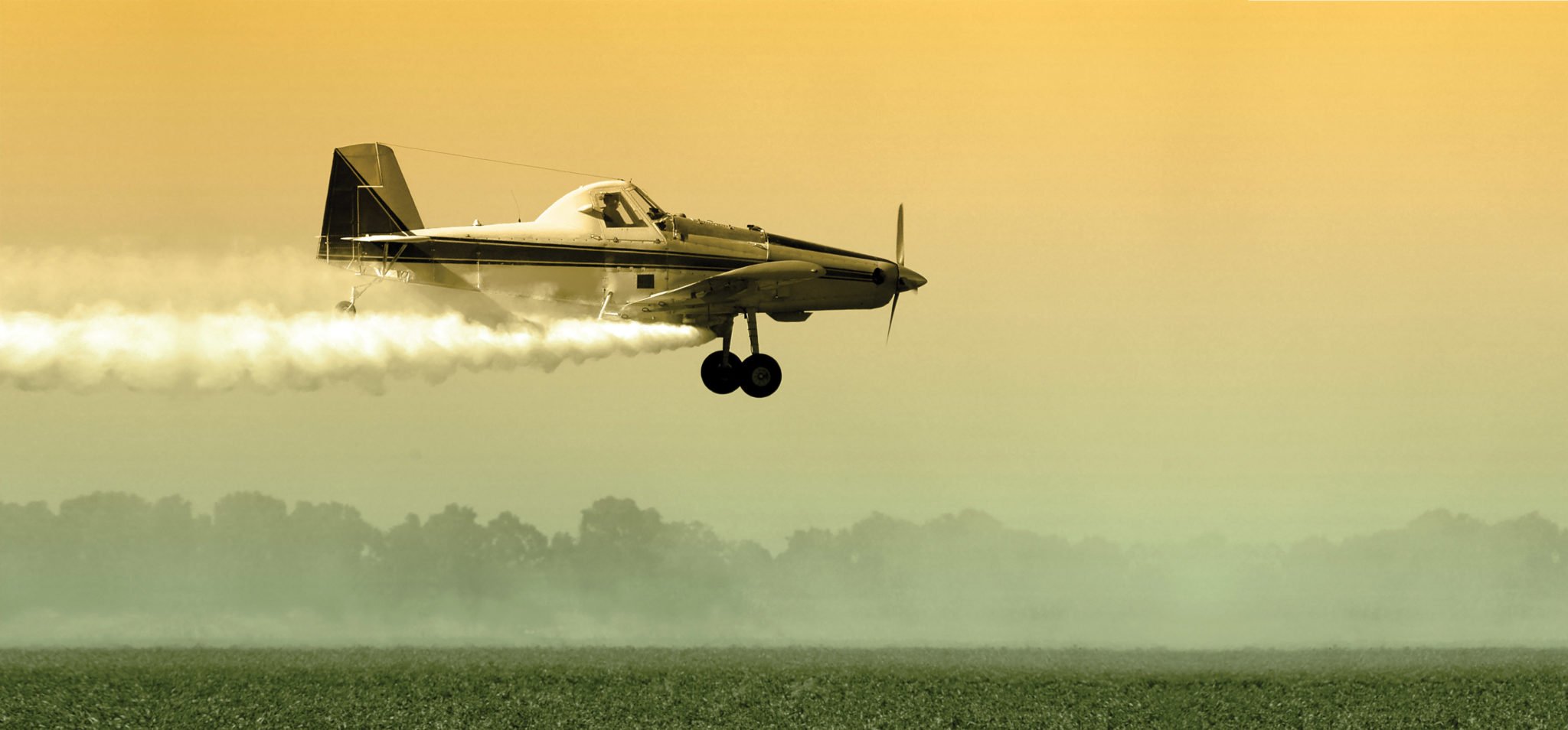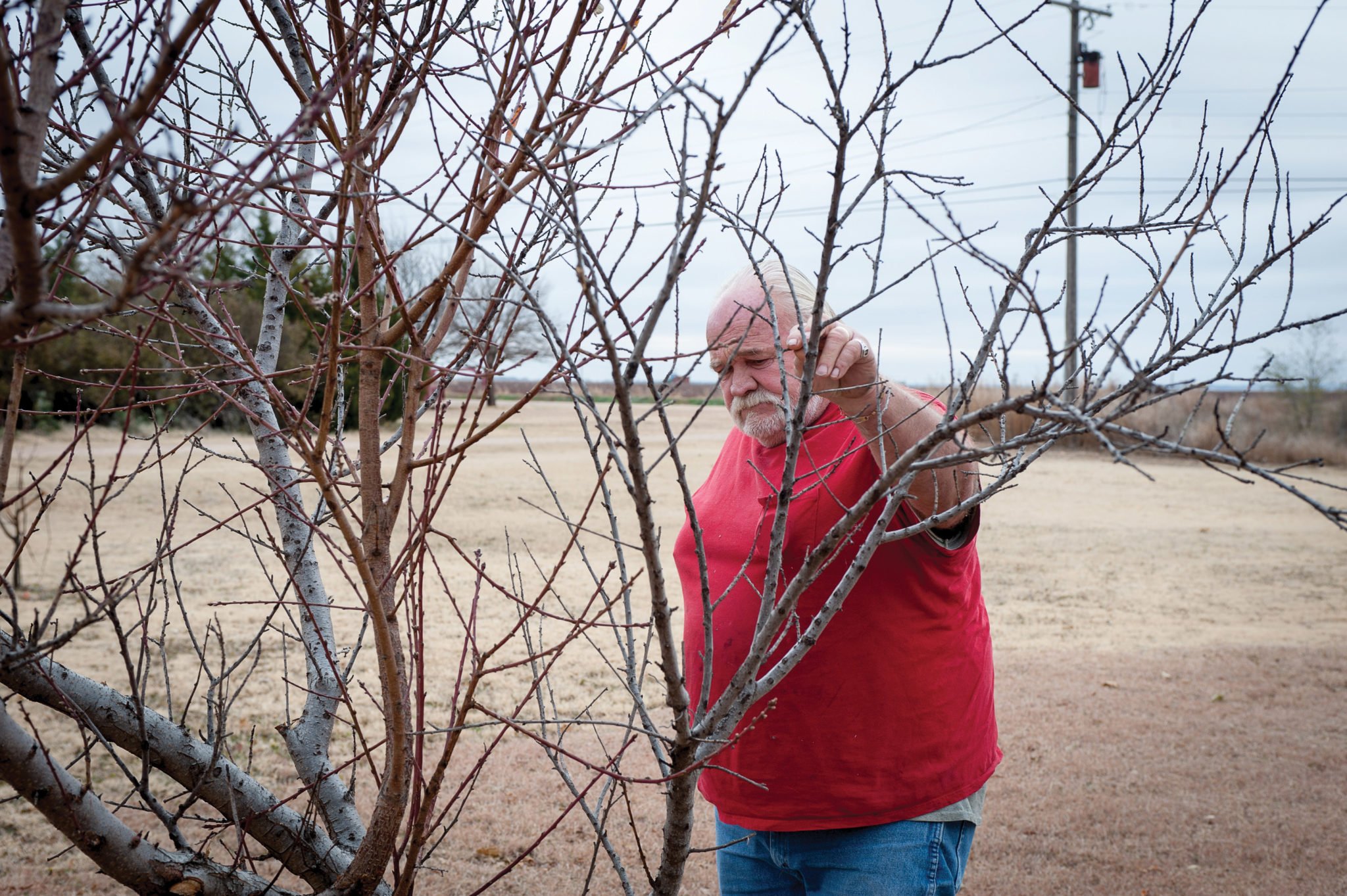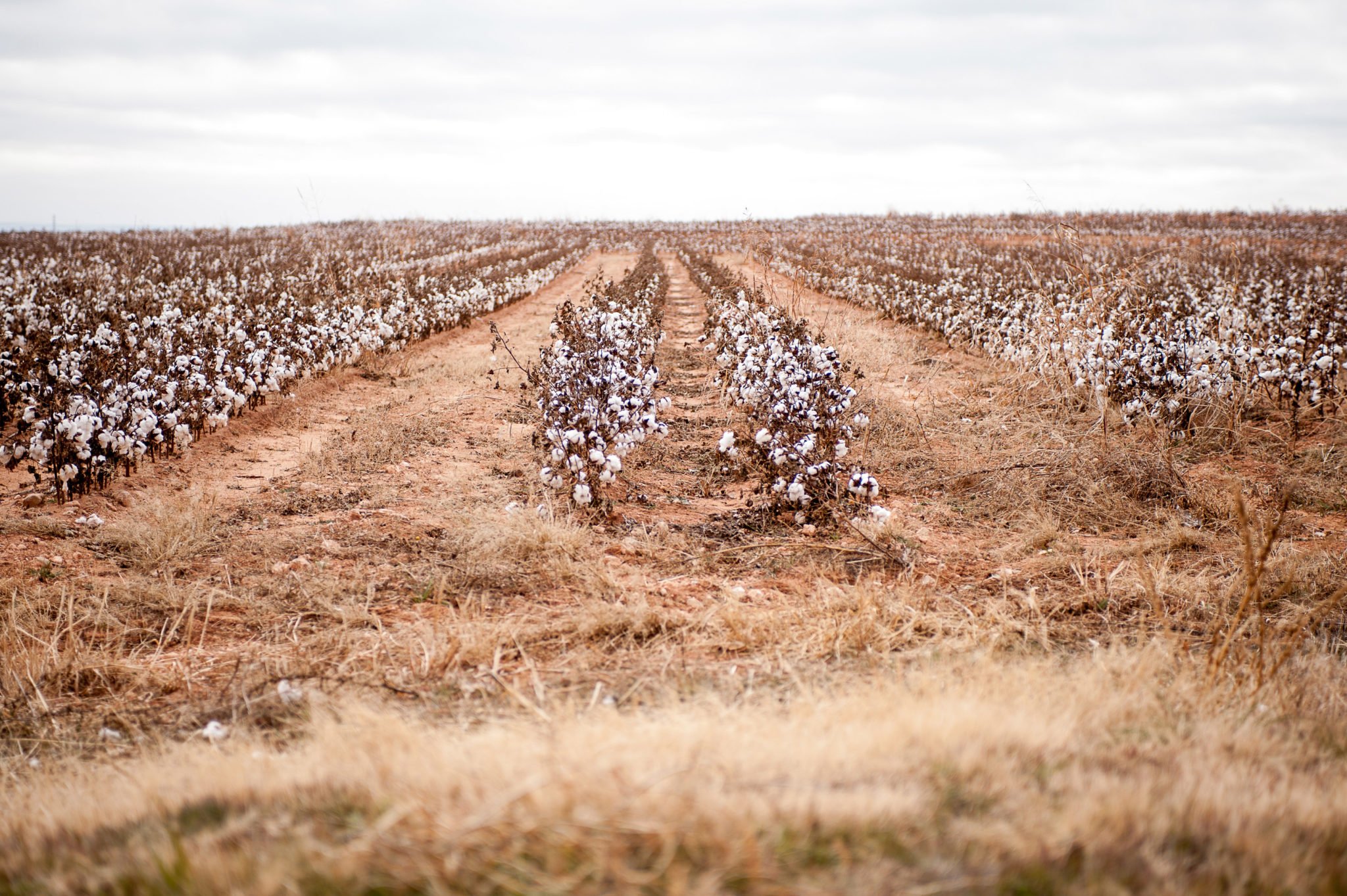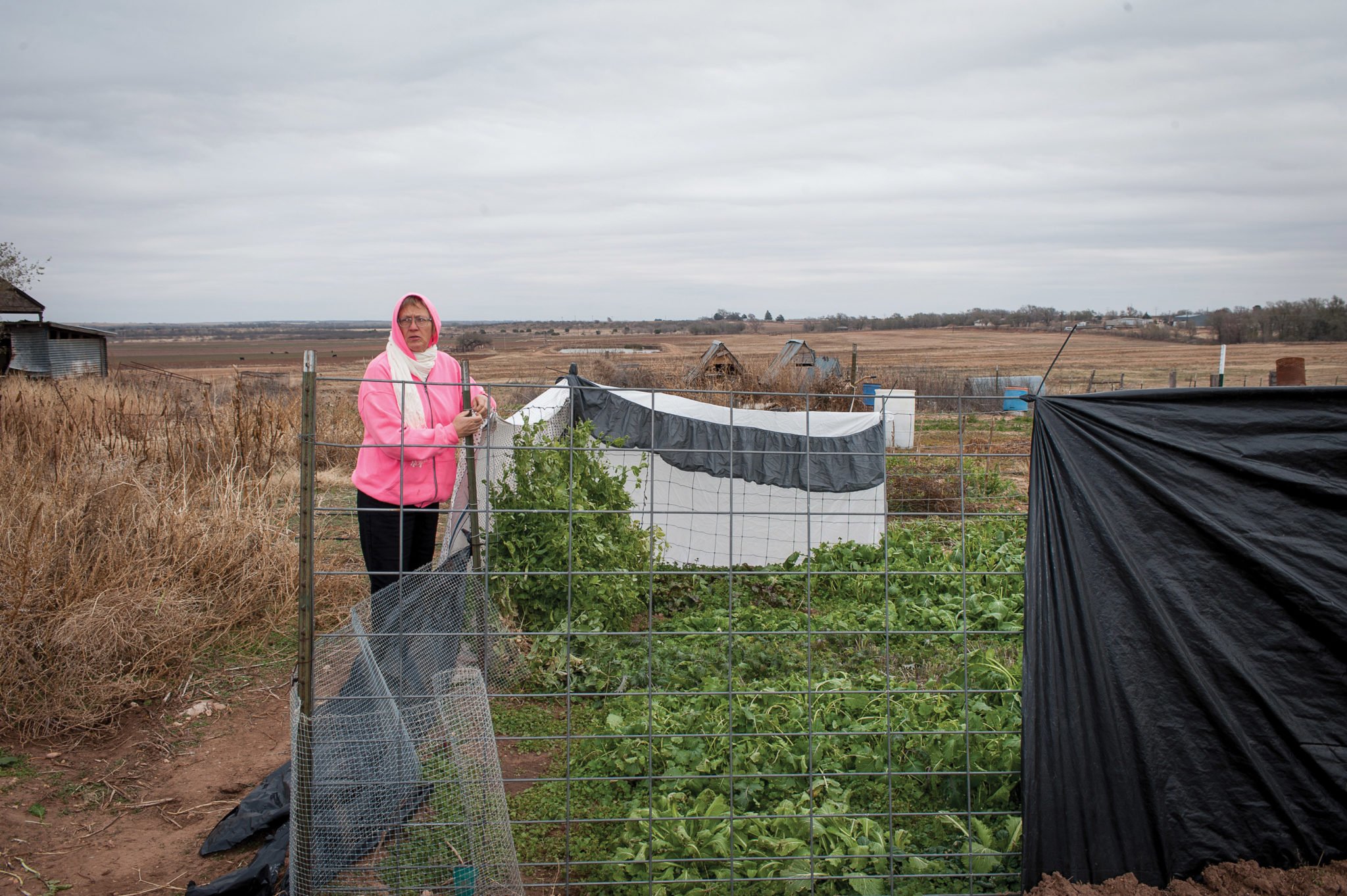
Death From Above
An Observer investigation finds that the Texas Department of Agriculture often allows serial offenders to keep flying despite hundreds of complaints.

A version of this story ran in the April 2017 issue.
People in Texas farm country say they are under assault from crop dusters indiscriminately spraying chemicals. An Observer investigation finds that the Texas Department of Agriculture often allows serial offenders to keep flying.
It’s December in Quitaque, and from dusk till dawn, convoys of trucks brimming with freshly picked cotton barrel down Highway 86, destined for gins in nearby Silverton and Roaring Springs. There, giant vacuums draw the cotton into the bellies of whirring machines and then, emptied of their cargo, the trucks race back to the fields to be repacked. During harvest season, the roadsides of this part of the Texas Panhandle are lined with little white drifts of cotton.
Cotton farming is big business in this region, where most of the state’s $2.2 billion crop is grown. Quitaque, a community of 387 people about an hour and a half southeast of Amarillo, is surrounded by a phalanx of cotton farmers who each year plant tens of thousands of acres. The town is an island in a vast white sea.
Though the industry is a lifeline for Quitaque’s economy, and the lives of folks in town are tied to the work of neighboring farms, residents say the relationship has a big drawback: the repeated and indiscriminate spraying of pesticides that is killing trees, poisoning livestock and making people sick.
The cotton convoy is rushing up and down the highway as Jerry Beck, a portly, white-bearded man in his 60s, steps into the Caprock Cafe, a country diner run by his wife. Despite below-freezing temperatures, he wears a short-sleeved shirt with a pocket that bears the imprint of a chewing tobacco can. He looks every bit the former sheriff that he is.
Beck periodically spits into a Styrofoam cup as he explains that Quitaque is under siege by crop dusters, pilots hired by farmers to spray pesticides on fields to kill weeds and prepare the cotton plants for harvest. Sometimes the pilots miss their marks and inadvertently deliver a cloud of poison to people, plants and animals.
Beck has firsthand experience with the “chemical drift” problem, as regulators call it. In May 2016, a duster spraying a field near Beck’s house sent an off-target blast of paraquat dichloride, a toxic pesticide, wafting over his home. The next day, he noticed that his vegetable garden and fruit trees were starting to show signs of being poisoned, which he blames on the paraquat, according to his complaint with the Texas Department of Agriculture (TDA). His biggest worry is that three of his grandkids were playing outside when the chemical drifted through his property.
“I remember thinking, ‘Boy, that ain’t good,’ because they were all exposed to it,” Beck said. In the following days, Beck’s granddaughters complained of headaches and difficulty breathing, problems that he attributes to the pesticide exposure.

The use of paraquat is tightly regulated by the Environmental Protection Agency (EPA) because of the chemical’s extreme toxicity. It can cause death in humans, and even limited exposure can be “corrosive to the skin and eyes,” according to a risk assessment conducted by the agency. A 2009 UCLA study found that people exposed to paraquat are three times more likely to develop Parkinson’s disease. The chemical has been banned by the European Union and China.
The label printed on containers of Gramoxone, a widely used pesticide whose active ingredient is paraquat, warns against breathing the chemical’s mist and says to seek medical attention if the poison comes into contact with skin or clothing.
Based on interviews with 11 people in Quitaque, it appears that the chemical drifted at least 5 miles. Its path started behind Beck’s house on the south side of town, cutting a swath through downtown and moving farther east, where it spread to more rural areas. In its path were trees, gardens, livestock, pets and people.
Kim Reiss, who runs a commercial organic garden in Quitaque, claims the pesticide made her nose bleed. “That was so weird. I never have a bloody nose,” she said. Over the next few days, the fruits and vegetables in her garden began to die. The leaves of the plants were pocked with what she described as “cigarette burns” that kept getting bigger. Reiss said she lost $8,000 worth of produce. That’s in addition to the adverse effects of being exposed to pesticides before the fall harvest each year, when farmers hire crop dusters to spray cotton fields. “Usually, while they’re defoliating [the cotton], I spend a good portion of that time being sick,” she said. “They call it allergies. I call it being defoliated. It’s a strange place to choose to live.”
About a month later, in late June, Quitaque farmer and rancher C.L. Hawkins was repairing a fence in one of his fields when he says the wind carried a wave of pesticide onto him. “I was working on a fence right across the road, and he was sprayin’. Boy, I just went ahead and got out of there,” said Hawkins, who complained to TDA.
Then, in September, Quitaque wheat farmer and cattle rancher Paul Teegardin reported to the agency that the pesticide drifted onto grass he uses to feed his beef cattle. Though it was the first time he had filed a formal complaint, Teegardin said his land has been under assault by crop dusters for at least two years.
“The stuff they’re using is pretty stout,” he said. “I’m bordered with cotton on one side and cotton on the other side. I hardly have any of my grass left.” He said he worries about the health of his cattle, which sometimes eat the vegetation that comes into contact with paraquat.
TDA, the agency charged with enforcing state and federal pesticide application rules, fielded complaints from 40 Quitaque residents (more than 10 percent of the population) as a result of the three incidents. The investigation is ongoing, but complainants have cast blame on at least two aerial application companies, one of which is run by Luke Boedeker, the president of an association that lobbies state officials on behalf of crop dusters. The other company is Probasco Flying Service, headed by Mitch Probasco, the past president of the association.
An Observer investigation found that from 2013 to 2016, TDA received about 900 reports of pesticide drift statewide, and of those, 169 were cases in which people said they were involuntarily exposed to dangerous chemicals. Complainants reported asthma attacks, bleeding gums, headaches, burning rashes, vomiting and diarrhea. The reports, when taken together, appear to show that chemical drift is occurring on a large scale and making Texans sick.

Raymond Singer, a New Mexico neuropsychologist and neurotoxicologist who is an expert in human exposure to pesticides, said the issue could be reaching “epidemic” proportions. “This is an important problem,” he said. “Whenever we introduce toxic chemicals into the environment, we have to be really careful that it doesn’t accidentally come into contact with people. We need to be careful of the effects of repeated exposures.”
Quitaque residents have been victim to drift before. In 2015, Quitaque farmer and rancher Ben Grundy reported to state officials that his face was doused in poison by a crop duster while he worked cattle in one of his fields. “The plane was right on top of us,” Grundy said. “He came over — it seemed like deliberately‚ and got us three times. I had a water jug and washed my face off as best I could.” But when Grundy raised the issue with the pilot, “He just got real smart and hateful,” Grundy said, “so I turned him in for deliberately spraying us.”
In many cases, TDA imposes only paltry fines on pilots and companies that repeatedly violate the law. Serial offenders are simply allowed to keep spraying. Though TDA’s enforcement has been light for years, it’s gotten even lighter under Agriculture Commissioner Sid Miller. Despite a more than $1 million increase in funding for the pesticide program in 2016, the number of enforcement actions dropped by 23 percent from 2015 to 2016, even though the number of complaints increased.
Perry Cervantes, TDA’s coordinator of pesticide certification and compliance, said in an interview that the agency’s efforts to curb pesticide misuse are effective. He also said evidence of paraquat drift is easily ferreted out by department investigators because the chemical “makes a circular dot on whatever it hits.”
“You can teach somebody real fast what paraquat looks like when it’s hitting vegetation,” Cervantes said.
But Beck, the former Quitaque lawman, isn’t confident in the agency’s ability to get answers and hold wrongdoers accountable. He and other residents have begun discussing legal options with a local attorney. “Everybody’s really forgiving here. They don’t want to cause trouble. But maybe the only way to stop this is to cost them some money,” he said.
“Everybody’s really forgiving here. They don’t want to cause trouble. But maybe the only way to stop this is to cost them some money.”

Revving and roaring, a yellow-and-blue crop duster lifts off into the bright Big Country sky, picking up speed and cutting through the air like a chainsaw splitting a log.
The plane lurches groundward at a 60-degree angle, reaching 145 mph and leveling out a story or two above the ground. Below it lies the Renderbrook Spade Ranch, a cattle operation in Mitchell County near Abilene. The pilot hits a switch in the cockpit, releasing a steady spray of thousands of pounds of the herbicide Sendero onto the mesquite trees below. The plane veers east, gaining altitude before diving for another attack. It’s nearly nightfall before the siege is done.
Sendero is marketed as “The New Standard in Mesquite Control,” a popular choice because of its ability to ravage leaves and infect the roots. But a little more than a week after the July 2015 incident, David Stubblefield, a neighboring cotton farmer, was faced with the death of 2,000 acres’ worth of his crop.
“We couldn’t figure out what the heck it was,” said Stubblefield, a lifelong cotton farmer. “And then I’m just sitting here wondering, ‘Am I going to have anything left?’”
In talking to neighbors, he soon found out he wasn’t the only farmer who had suffered major crop losses. Six Mitchell County farmers eventually filed complaints with TDA claiming pesticide drift in connection with the July incident. Three weeks later, as state investigators were scheduling initial interviews with those farmers, a similar mesquite assault was carried out at Rocker b Ranch in nearby Reagan County. Soon, the farmers whose fields border the ranch watched as their cotton plants’ leaves blistered and the bolls shriveled. Eight people filed complaints with TDA in that case. Lauderdale Aerial Spraying, a firm based in Caldwell, was eventually fined $600 for the incident.
“We got hit bad,” said LaShae Braden, who owns a 1,000-acre cotton farm near Rocker b Ranch. “We didn’t get much cotton out of the field, and what we did get rated lower and brought lower prices. It’s been really hard on the family.”
A few months later, the Mitchell and Reagan County farmers would take matters into their own hands, joining as plaintiffs in two lawsuits to sue Helena Chemical Company, a farm chemical industry giant that regularly finds itself on the wrong side of state regulators.
According to the lawsuits, owners of the ranches hired Helena to coordinate a pesticide airstrike on the mesquite. Helena in turn hired Lauderdale to do the work. The lawsuits claim that Helena’s chemical drifts resulted in human exposure, crop loss and water and soil contamination. Together, they allege $10 million in damages. Both cases are pending.
Helena and Lauderdale should be familiar to TDA investigators. In 2013, a Seguin woman reported to the agency that Lauderdale sprayed poison on cornfields close to her home. She told the agency she was concerned about her health. That same year, a woman in Covington reported that the company sprayed her property, killing trees and her vegetable garden and making her dog so sick it required veterinary care.
In 2013, rancher and conservationist Gary Price alleged that Lauderdale was responsible for drifting paraquat onto his ranch 70 miles south of Fort Worth, contaminating his herd of all-natural beef cattle so severely that the high-end supermarket he supplies refused to buy the cows. Price filed a lawsuit that was settled in 2015. Though it wasn’t listed as a defendant in the case, Helena was named in the complaint as the entity that prepared the chemicals for Lauderdale’s application.
Helena has run afoul of state regulators at least seven times since 2013, documents show. Among other infractions, the company has been cited for selling restricted pesticides to unlicensed people; violating a TDA order to stop distribution of prometryne, a weed killer; and overseeing a paraquat application that exposed six agricultural workers. In the paraquat incident, Helena directed a crop dusting company to spray a field where Monsanto employees were conducting nematode field trials, according to a TDA violation notice. The workers told an agency investigator that the plane made four passes over the field; two workers said the poison touched their skin. And while TDA did levy fines (grand total: $5,920) against the company in those seven cases, the penalties don’t appear to have deterred Helena.
A representative for Helena declined an interview request, instead sending a short statement to say it “disagrees with plaintiffs’ contentions in this lawsuit and is confident that the truth will emerge as this litigation progresses.” Kenneth Lauderdale, who owns Lauderdale Aerial Spraying, said in an interview that it was never proven his company drifted on plaintiffs’ farms. “There was no drift that occurred,” he said. In February 2016, TDA fined the company $600 for drifting in the Reagan County case, but the company is contesting the violation and fine.

Pesticide drift is most likely to occur when crop dusters make applications in temperatures above 90 degrees and in wind speeds higher than 10 mph, said Ronnie Halfmann, a former crop duster and retired administrator of TDA’s pesticide enforcement program. Pesticide applicators in Texas are required to follow the directions on a chemical’s label. Gramoxone’s label makes no mention of specific temperatures on its label, but does warn that drift is least likely when wind speeds are between 2 and 10 mph.
In Texas cotton country, where temperatures regularly skyrocket to triple digits and winds roar over the rolling plains, this rule of thumb often would restrict pesticide applications to the early morning. But top-of-the-line crop dusting aircraft can cost $1.4 million, not including the price of fuel, maintaining professional licensure and paying employees.
“There’s a high cost of operating and owning these aircraft,” Halfmann said. “So when they’re in season, they will take advantage of those days. They’re gonna spray from daylight to dark regardless of the conditions because they need to get every acre they can done.” The only time the crop dusting company makes money is when a plane’s “money valve” (the mechanism used to release chemicals) is open, he said. “Anytime that valve is closed, you ain’t making no money. You’re just putting time and money on that aircraft. You need to have it in that field as much as possible.”
Asked if it’s true that some crop dusters see the fines merely as a cost of doing business, Halfmann said, “Yes. Absolutely, without reservations. … The chance of you getting caught is slim. It’s very little. And that’s just the way it is.”
Records show at least 20 applicators have repeatedly violated the drifting rule from 2013 to 2016.
Cervantes, the TDA pesticide official, said the department’s role as chief enforcer of state pesticide rules recently has been limited because of budgetary constraints. That doesn’t square with a legislative report showing that the regulatory program’s budget has increased from $4.6 million in 2015 to $5.7 million in 2016. When I asked a TDA spokesperson about this apparent contradiction, she declined to answer, forwarding that inquiry, among others, to a department attorney. Despite several requests, the attorney never replied.

So far, the investigation into Quitaque’s 2016 drift incidents has gone nowhere. Ten months after the initial complaints were filed, TDA still hasn’t completed the probe. Citizens have named two area crop dusting outfits, Boedeker Flying Service and Probasco Flying Service, as possible culprits. A TDA spokesperson declined to answer questions about who’s to blame, citing the ongoing investigation.
In interviews, representatives of both companies denied wrongdoing in the cases.
Paul Teegardin, the rancher, wrote down the registration number of a plane connected to the June incident and gave the information to TDA, according to a complaint. The plane is registered to Mitch Probasco, who said that TDA investigators reviewed his flight records shortly after complaints were made last spring. Since then, he said, he’s heard nothing from the agency. He said that the complaints have “worked the TDA to death,” and have also made it harder to conduct business in the town.
“What I know is after the town of Quitaque got drifted on, those people went berserk,” he said. “Every time we went down there to spray for somebody, there were two or three people down there on the highway taking videos. They went stark raving mad.”
Probasco said he knows who is to blame in the drift incidents, but declined to name the culprit. Luke Boedeker, president of Boedeker Flying Service, said he is being investigated for atleast one of the incidents, but complained that the residents have cast a wide net in the case.
“Every aerial application business in the area was listed in that complaint,” said Boedeker. “No one ever made any evidence available to me about that complaint. The book is still open there.”
In 2012, a pilot flying for Boedeker Flying Service was fined $400 for a drift incident in nearby Hall County. Another complaint citing drift was filed against the company last year. Boedeker said that because of his company’s size and scope, it sometimes can be a target for unwarranted complaints. “We’re the first ad in the Yellow Pages, so to speak,” he said.
Boedeker’s name carries considerable weight in the crop dusting community — he is the president of the Texas Agricultural Aviation Association, the trade group representing crop dusters at the Capitol. Probasco was president of the same trade organization in 2015. Boedeker said he preaches “prudence” to minimize drift incidents. “Do poor decisions happen? Sure they do,” he said. “But our goal is to minimize those. To make that statistic look better to everyone who looks at it, year after year.”
Chris Shields, the organization’s executive director, said EPA research has shown land-based spray applicators, such as tractors, are responsible for about 75 percent of drift incidents.
Shields didn’t cite a specific EPA study, but he may have been referring to a 1983 U.S. Department of Agriculture study on pesticide drift conducted by a University of Arizona professor. Funded by the EPA, the study showed that ground-based pesticide applications can be more conducive to drift than airplanes. One of the study’s contributors was Stuart W. Turner, an attorney who for 13 years acted as chair of a trade group that promotes the use of helicopters in pesticide applications.
At the study’s conclusion, Turner offered advice to crop dusters who are sued: Investigate the ground applicators. “An applicator should retain competent experts to conduct the investigation, since on many occasions it is found that the alleged damage has been caused not by an aircraft but by a nearby ground spray operation,” Turner wrote.
A 1998 study by University of Arizona researchers reaches the opposite conclusion: that “ground equipment usually causes less drift than aerial application.” It also advises that crop dusters use a much larger “buffer zone” than land-based applicators to protect against spraying high-population areas, schools and bodies of water.
The only time the crop dusting company makes money is when a plane’s “money valve” (the mechanism used to release chemicals) is open.
My analysis of TDA complaint reports from 2013 to 2016 shows that cases involving aerial applicators outnumbered cases involving ground-based applicators almost six to one.
Whether by land or air, pesticide drift appears to be making Texans sick, and the problem could be more serious than state records indicate, said Singer, the neurotoxicologist. He said the number of reported human exposures to pesticides since 2013, about 170, is almost certainly an undercount, as some people never know they’ve been exposed and others choose not to report. Even physicians can mistake the symptoms of pesticide exposure with symptoms of other illnesses.
A 2001 experiment conducted by the Pacific Northwest Agricultural Safety and Health Center at the University of Washington found evidence that the children of farmworkers had elevated levels of pesticides in their bodies. But the study also found similarly elevated levels in children who simply lived in agricultural areas — and the uptick was correlated to the nearby farms’ spraying schedules.
Though the EPA assesses the human health risks associated with pesticide use, its studies take into account only obviously dangerous exposures, such as ingesting paraquat. The agency rarely measures the harm caused by persistent, low-level exposure, so it can be difficult for plaintiffs to prove in court that repeated chemical drift incidents have caused their health problems.
In Quitaque, some are tired of waiting. Teegardin said he and three other residents have organized to film the crop dusters with their cellphones. When a plane sprays pesticides on a windy day, members of the group call or text each other to make sure someone is there. They film from the highway if they have to. “Calling TDA and complaining, well, nothing happens,” he said. “I think this is the best way to handle it. What else can you do?”
On March 4, the plane-watching reached a fever pitch. Teegardin went outside early that morning to find his wife standing in their front yard with a pair of binoculars and a double-barreled shotgun. A crop duster was flying nearby.
This article appears in the April 2017 issue of the Texas Observer. Read more from the issue or become a member now to see our reporting before it’s published online.



